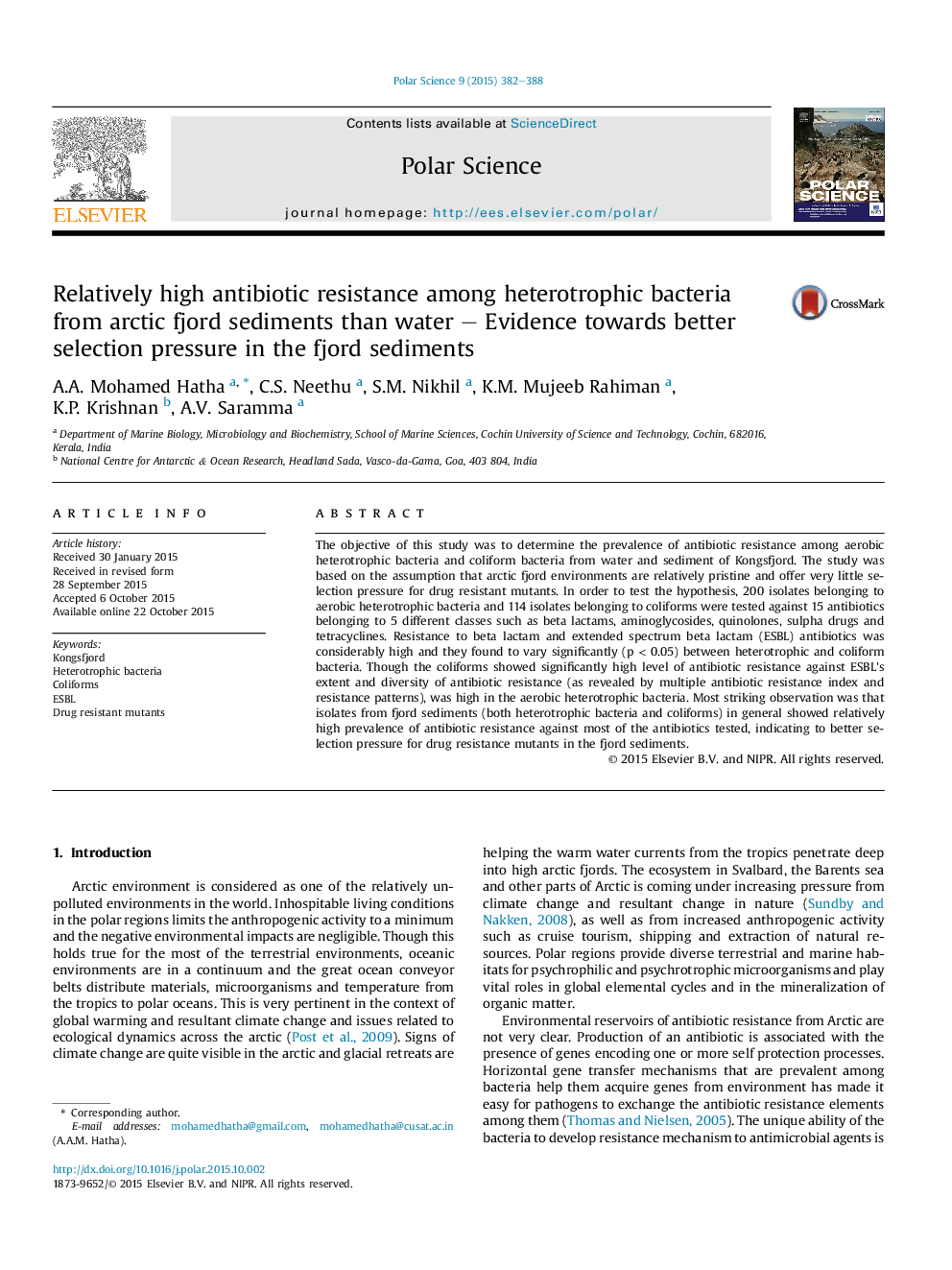| Article ID | Journal | Published Year | Pages | File Type |
|---|---|---|---|---|
| 4683169 | Polar Science | 2015 | 7 Pages |
The objective of this study was to determine the prevalence of antibiotic resistance among aerobic heterotrophic bacteria and coliform bacteria from water and sediment of Kongsfjord. The study was based on the assumption that arctic fjord environments are relatively pristine and offer very little selection pressure for drug resistant mutants. In order to test the hypothesis, 200 isolates belonging to aerobic heterotrophic bacteria and 114 isolates belonging to coliforms were tested against 15 antibiotics belonging to 5 different classes such as beta lactams, aminoglycosides, quinolones, sulpha drugs and tetracyclines. Resistance to beta lactam and extended spectrum beta lactam (ESBL) antibiotics was considerably high and they found to vary significantly (p < 0.05) between heterotrophic and coliform bacteria. Though the coliforms showed significantly high level of antibiotic resistance against ESBL's extent and diversity of antibiotic resistance (as revealed by multiple antibiotic resistance index and resistance patterns), was high in the aerobic heterotrophic bacteria. Most striking observation was that isolates from fjord sediments (both heterotrophic bacteria and coliforms) in general showed relatively high prevalence of antibiotic resistance against most of the antibiotics tested, indicating to better selection pressure for drug resistance mutants in the fjord sediments.
